Introduction
In the realm of modern software development and IT operations, DevOps culture represents a revolutionary shift that integrates people, processes, and technology to enhance collaboration and streamline workflows. This cultural transformation emphasizes the importance of communication across departments, effectively dismantling silos and fostering a shared sense of ownership among teams. By prioritizing continuous feedback and adaptive methodologies such as Agile, DevOps aims to deliver high-quality software at an accelerated pace.
The adoption of DevOps practices, including continuous integration and continuous delivery, significantly improves the predictability, efficiency, security, and sustainability of operational processes. Industry experts highlight the flexibility and adaptability of DevOps as key factors in its successful implementation, tailored to meet the specific needs of each project. Organizations like TBC Bank have showcased the tangible benefits of adopting a DevOps culture, achieving remarkable improvements in time-to-market for digital products and overall operational efficiency.
What is DevOps Culture?
DevOps culture signifies a profound transformation in the approach to software development and IT operations. By integrating people, processes, and technology, it fosters enhanced collaboration and streamlined workflows, which are crucial for today's fast-paced technological landscape. This cultural shift prioritizes communication across departments, effectively breaking down silos and promoting a shared sense of ownership among teams. Emphasizing continuous feedback and adaptive methodologies, such as Agile, this approach aims to deliver high-quality software at an accelerated pace.
The adoption of development and operations practices, such as continuous integration and continuous delivery, enhances the predictability, efficiency, security, and sustainability of operational processes. As emphasized by numerous industry specialists, the essential factor for effective implementation in this field resides in its adaptability and capacity to meet particular project requirements. Organizations like TBC Bank have demonstrated the tangible benefits of such a transformation, achieving significant improvements in time-to-market for digital products and overall operational efficiency.
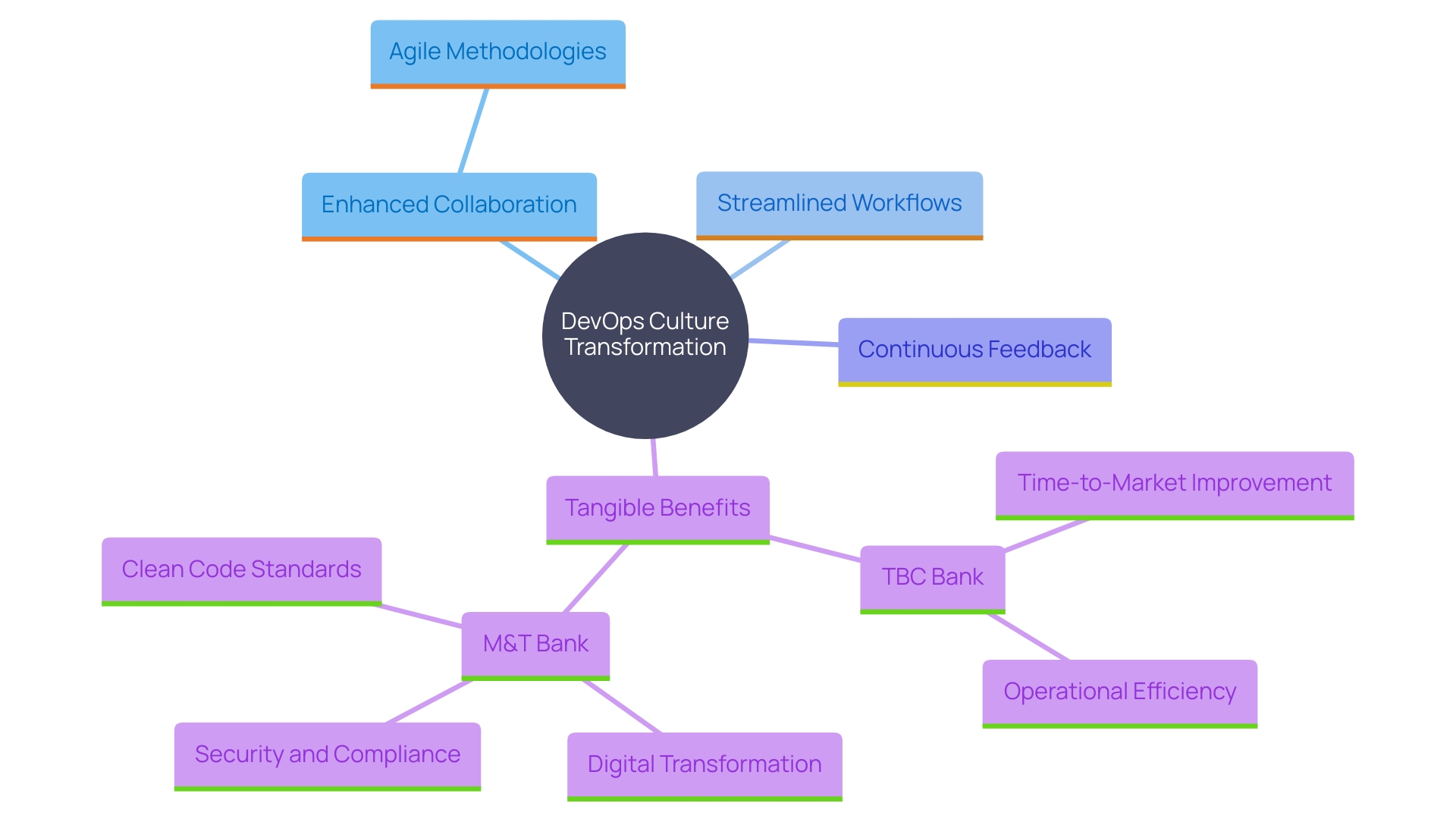
Key Principles of DevOps Culture
The core of DevOps culture is epitomized by several foundational principles that are critical for its successful implementation. 'Collaboration is crucial, fostering seamless interaction between development and operations groups, which is essential for rapid and efficient software delivery.'. Ongoing enhancement is another essential principle, motivating groups to consistently refine processes and improve performance, thus maximizing efficiency and predictability.
Customer-centric action ensures that all efforts are aligned with delivering value to the end-users, enhancing satisfaction and engagement. Shared responsibility means that all team members are accountable for the outcomes, promoting a sense of ownership and commitment to quality. Finally, continuous integration and delivery streamline updates and deployments, reducing time-to-market and increasing reliability.
'These principles together foster a setting conducive to innovation, adaptability, and operational excellence, in line with the primary aim of enhancing predictability, efficiency, security, and sustainability in operational activities.'.
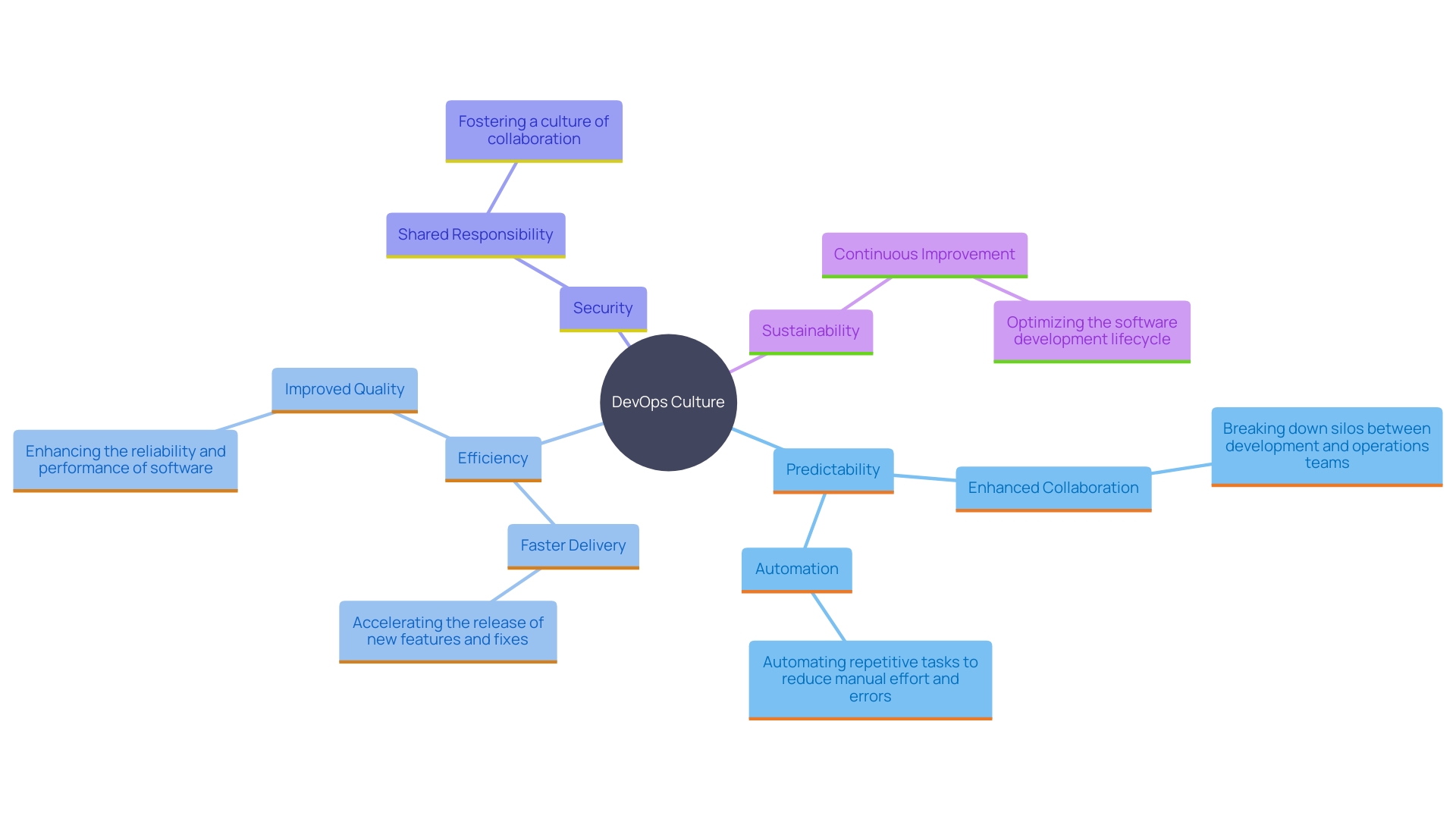
Practices in DevOps Culture
'DevOps culture flourishes on methods aimed at optimizing and improving application development workflows.'. Central to this culture are practices like continuous integration (CI), continuous delivery (CD), microservices architecture, infrastructure as code (IAC), and comprehensive monitoring and logging.
Continuous Integration involves developers frequently merging their code changes into a shared repository, reducing conflicts and facilitating robust testing. This practice, often summarized as 'commit early, push often,' helps avoid the dreaded 'merge hell' by ensuring that the mainline code remains stable and up-to-date.
Continuous Delivery extends the CI process by automating the preparation of code for release, ensuring fast and reliable software deployments. When paired with Continuous Deployment, this practice allows code changes to be automatically deployed to production environments, significantly reducing manual intervention and enhancing deployment efficiency.
Microservices architecture further breaks down applications into smaller, independent services that can be developed, deployed, and scaled individually. This modular approach increases system resilience and allows groups to innovate and deploy changes more rapidly.
'Infrastructure as Code (IaC) transforms infrastructure management by enabling groups to define and provision infrastructure through code, ensuring consistency and reducing the risk of human error. This practice is crucial for maintaining scalable and repeatable environments across various stages of the development lifecycle.
Ultimately, strong monitoring and logging offer immediate insights into system performance and operational challenges, allowing groups to identify and address issues rapidly, thereby preserving the system’s integrity and performance.
These practices collectively enable teams to automate processes, reduce errors, and enhance the overall quality of delivery, aligning technological initiatives with business goals and driving innovation.
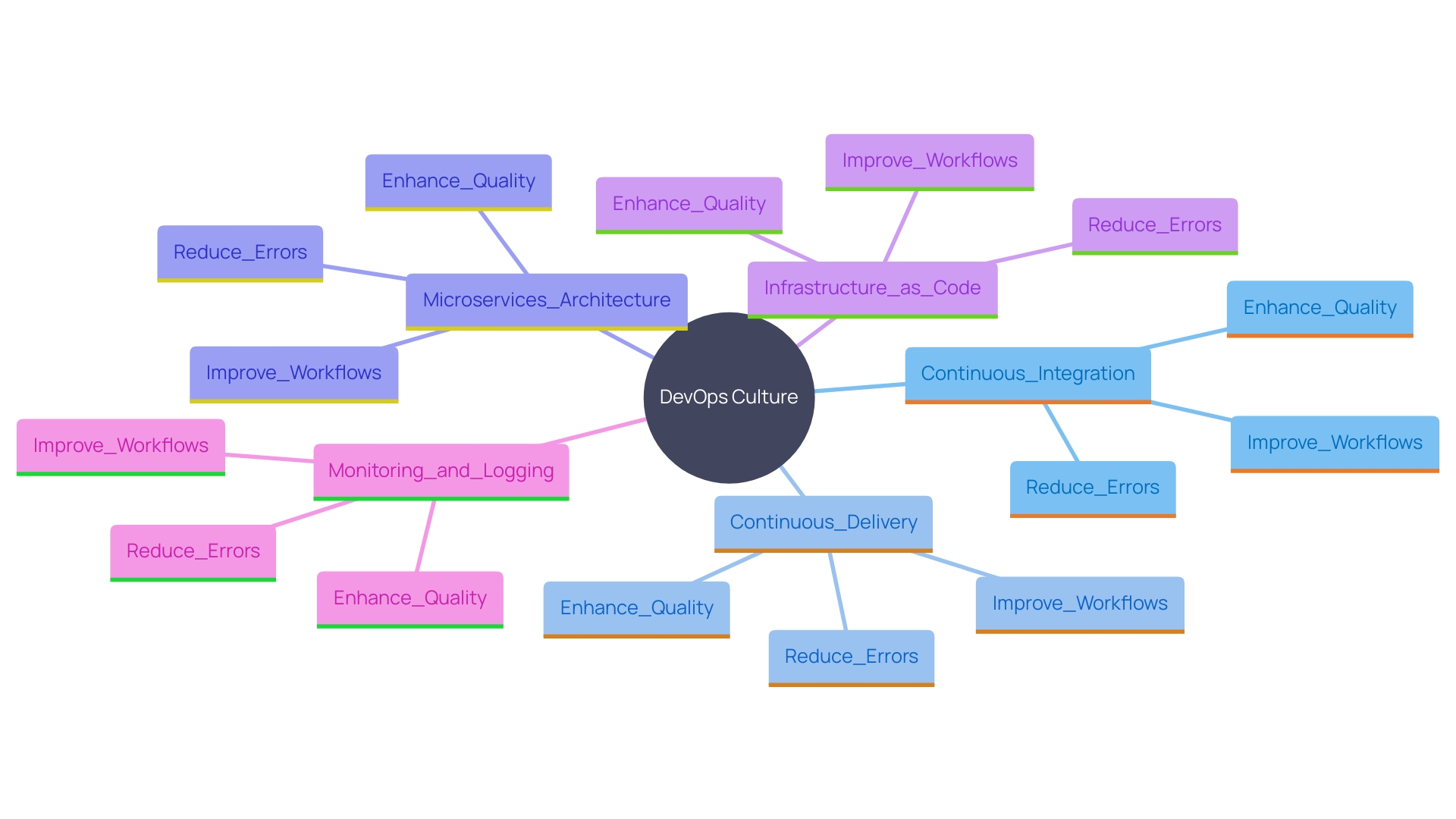
Benefits of DevOps Culture
Embracing a collaborative development and operations culture produces many advantages across technical, cultural, and business aspects. Technically, it improves the quality of applications and speeds up release cycles. The necessity for swift delivery and reduced turnaround time in software development has made this approach essential, aiming to produce top-notch output with minimal post-production errors. 'According to the State of Operations Report, this methodology maximizes the predictability, efficiency, security, and sustainability of operational processes.'.
Culturally, this approach encourages a cooperative atmosphere where groups collaborate closely towards shared objectives. This collaboration addresses the delay in releasing new versions due to separate teams for development and operations, reducing miscommunication and ensuring that development teams understand the production environment better. This shift is evident in organizations like M&T Bank, which established organization-wide Clean Code standards to support maintainability and performance.
From a business perspective, organizations experience improved customer satisfaction and increased competitiveness in the market. Development and operations practices enable companies to innovate faster, adapt to changing markets better, and efficiently drive business results. For instance, TBC Bank's mission to improve time-to-market for digital products has enhanced their customer experience, aligning with the overarching business goal of making people's lives easier.
Implementing DevOps Culture
Implementing a DevOps culture successfully requires a strategic approach that integrates both technological tools and a focus on organizational change. This involves evaluating existing methods, identifying areas for enhancement, and nurturing an attitude focused on teamwork and ongoing education. Effective change management strategies are essential to navigate these cultural shifts and ensure stakeholder buy-in.
As organizations aim to improve their engineering efficiency, it's essential to recognize that software is central to nearly every customer journey and operation. This places a significant impact on productivity, responsiveness, and strategic success. According to a joint initiative by Microsoft and GitHub, focusing on the developer experience (DevEx) rather than just productivity can lead to sustainable outcomes. This shift emphasizes the importance of creating an environment optimized for writing code, rather than merely expecting more output from developers.
Real-world examples like TBC Bank's transformation from large-scale operations to flexible, continuous value delivery illustrate the importance of aligning technological and cultural shifts. Founded in 1992, TBC Bank aims to improve the time-to-market for digital products, enhancing both customer and employee experiences. This case highlights the importance of a comprehensive approach to software development and operations, where the combination of technology and culture propels organizational success.
Moreover, the healthcare industry highlights the need to consider the human element in technology adoption. As Arvind Vaishnav from Philips Innovation Campus points out, it’s essential to think about how technology interacts with professionals and complements their workflow, ensuring that it supports, rather than detracts from, their primary purpose. This perspective is relevant across industries, emphasizing that successful implementation of development and operations is not just about tools but also about people and processes.
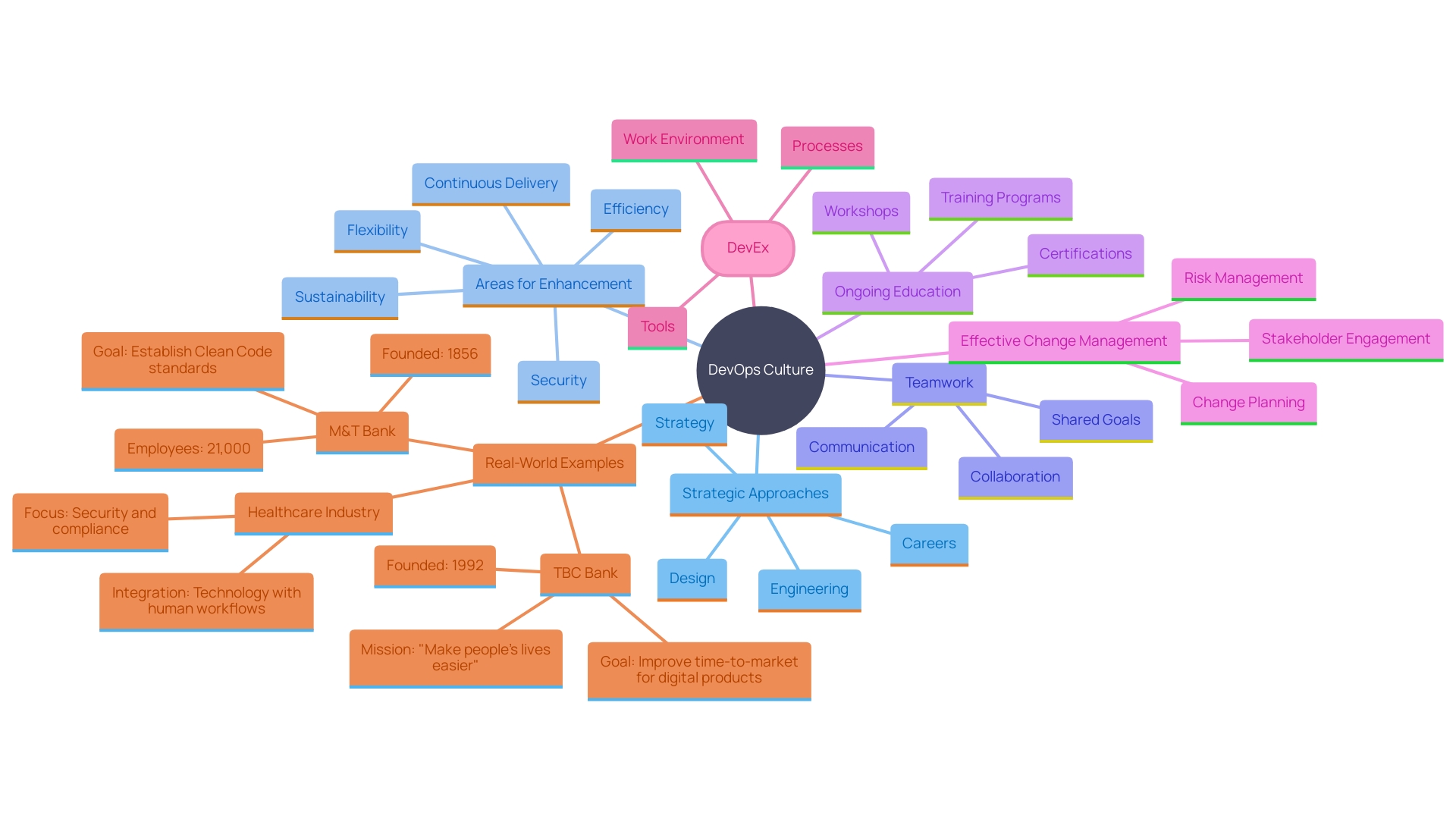
Challenges and Strategies for Adoption
Embracing a collaborative culture presents numerous challenges, despite its clear advantages in enhancing software delivery and operational efficiency. Resistance to change is often a significant hurdle, as employees may be reluctant to shift away from established practices. Leadership support is crucial; without it, initiatives can falter. Furthermore, inadequate training can hinder advancement, leaving groups ill-prepared to adjust to new methodologies.
To navigate these obstacles, organizations must prioritize clear communication strategies. This involves not only conveying the benefits and goals of this methodology but also addressing concerns and misconceptions. Ongoing training and support are essential to equip teams with the necessary skills and knowledge. Furthermore, fostering an environment that encourages experimentation and learning from failures can drive innovation. For instance, the UK government's Exemplar programme successfully transformed 20 services in under two years by embracing a culture of continuous improvement and resilience.
Backing these initiatives with data-informed insights, like those emphasized in Google's State of Operations Report, can deliver useful benchmarks and best practices. Emphasizing the importance of flexibility and adaptability, as there is no one-size-fits-all solution in DevOps, is key to overcoming resistance and driving successful adoption.
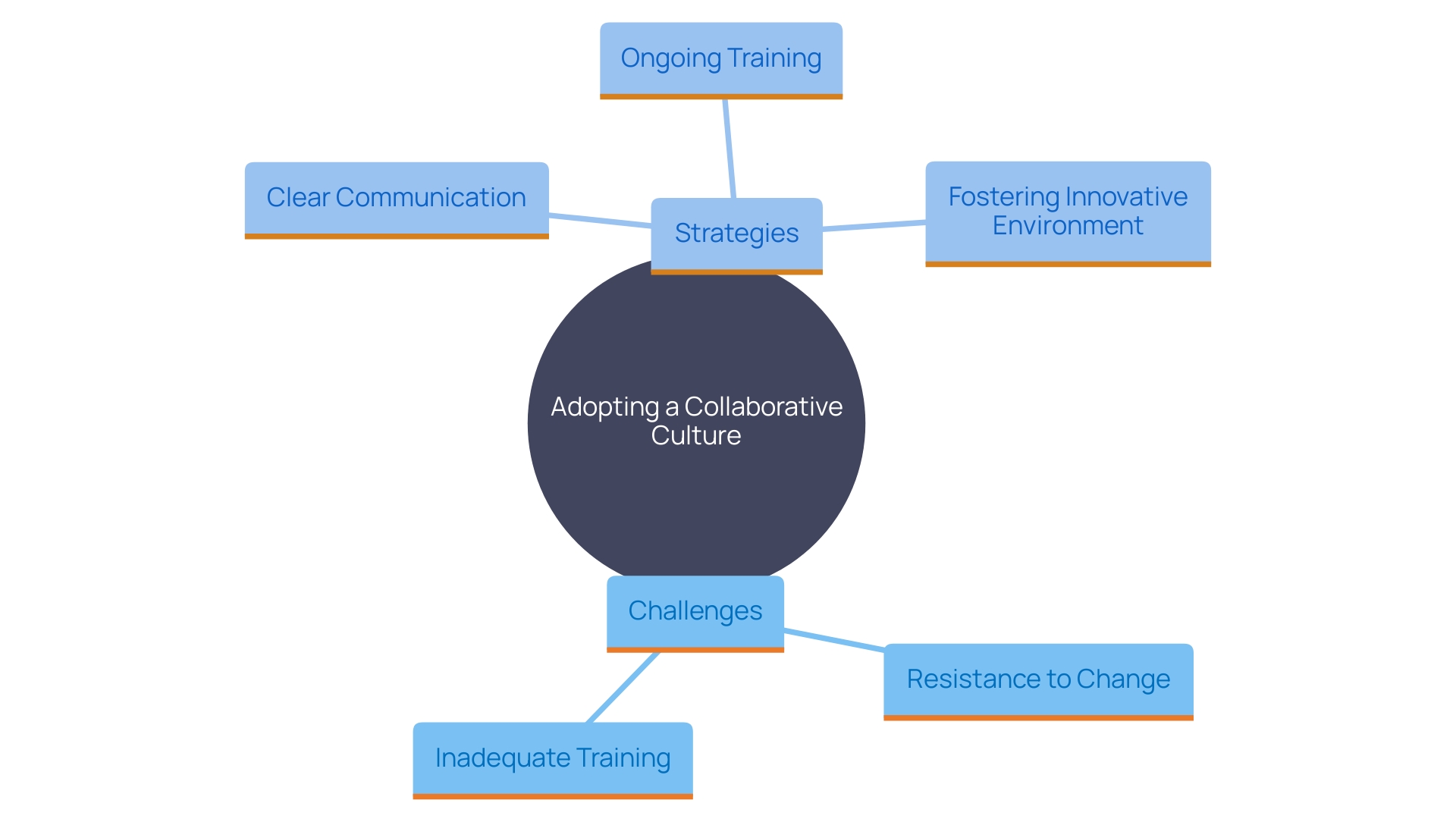
Conclusion
The adoption of DevOps culture represents a transformative approach to software development and IT operations, emphasizing collaboration, continuous improvement, and customer-centricity. By breaking down silos and fostering a shared sense of ownership, organizations can streamline workflows and enhance the quality of software delivery. Key practices such as continuous integration and delivery, microservices architecture, and infrastructure as code are instrumental in achieving these goals, allowing teams to innovate rapidly and maintain operational efficiency.
The benefits of implementing a DevOps culture extend beyond technical improvements. Culturally, it cultivates an environment of collaboration, reducing miscommunication between development and operations teams, and ultimately enhancing customer satisfaction. Organizations that embrace these principles not only improve their time-to-market but also gain a competitive edge in the marketplace.
Real-world examples, such as TBC Bank, underscore the tangible advantages of this cultural shift, illustrating how DevOps practices can lead to significant operational efficiencies and enriched customer experiences.
However, successful implementation requires a strategic approach that addresses potential challenges, such as resistance to change and the need for effective training. Clear communication, ongoing support, and a commitment to fostering a culture of experimentation are essential for overcoming these hurdles. By focusing on both technological tools and the human elements of change, organizations can navigate the complexities of DevOps adoption and fully leverage its potential to drive innovation and business success.
Ultimately, the integration of DevOps culture not only enhances operational processes but also aligns technological initiatives with overarching business objectives, paving the way for sustained growth and adaptability in an ever-evolving landscape.




